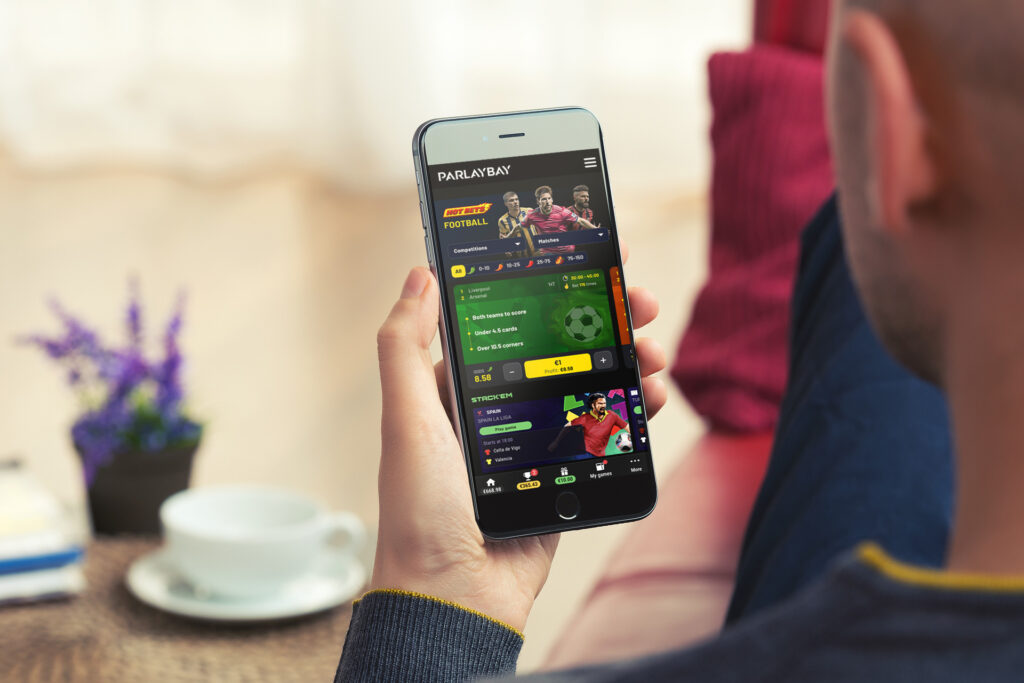In the rapidly evolving sports betting industry, B2B providers have traditionally supplied backend solutions like data feeds, odds, and analytics. These services have been the foundation upon which the industry has grown. However, as competition intensifies and technological innovation accelerates, the limitations of this traditional B2B model are becoming apparent. The providers who stick to merely offering odds and feeds risk becoming commoditized—easily replaced by competitors who offer similar, if not identical, services.
To truly stand out and create sustainable growth, B2B providers must reimagine their role in the value chain. This involves going beyond the backend and providing innovative, consumer-facing solutions or even evolving into brands themselves. This shift will not only boost their market position but also unlock new revenue streams.
In this article, we will explore the strategic moves that B2B sports betting providers can make to move beyond odds and feeds, and how providers can differentiate themselves in an increasingly crowded space.
Traditional Roles of B2B Providers in Sports Betting
For years, the role of B2B providers in sports betting has revolved around offering crucial backend services. These services typically include:
- Data Feeds: The core service that provides real-time data from sports events.
- Odds Calculation: Generating odds for various sports markets based on statistical models and historical data.
- Risk Management: Tools to help operators manage the financial risks associated with offering bets.
While these services remain essential, they have become commoditized. Companies are increasingly caught in a race to the bottom, competing on price rather than offering differentiated value. Even providers with advanced micro-betting technology face challenges. Their dependence on the traditional model of delivering odds and data leaves them vulnerable to competitors who can offer similar services at lower prices
Why Just Providing Odds and Feeds Is No Longer Enough
The primary challenge for B2B providers who only offer odds and feeds is that these services are easily replicable. As a result, B2B providers face constant pressure to lower prices, which erodes their margins. The commoditization of these services also leads to what some call the “discount effect”, where the perceived value of a B2B provider’s offerings diminishes over time because they are viewed as interchangeable with those of other providers.
This is where many B2B providers in the sports betting industry face challenges. While they may capture attention with innovative offerings like micro-betting, the core service—providing odds and data feeds—is not sufficiently unique to keep operators from seeking better deals elsewhere. The failure to diversify beyond backend services leaves these providers vulnerable within the value chain, as they become easily replaceable by competitors offering similar products. This reliance on basic services without advancing into more integrated, value-added solutions significantly limits their competitive edge.
Strategic Positioning in the Value Chain: The Move Beyond Odds
To escape this commoditization trap, B2B providers must rethink their role in the value chain. Instead of being solely backend service providers, they need to consider how they can deliver unique value to both their business partners and, indirectly, to end users. Here are a few strategies for achieving this:
- Own the Brand Experience: One of the most effective ways for a B2B provider to differentiate itself is by creating a recognizable brand. By owning part of the consumer experience, B2B providers can offer more than just data—they can offer an engaging, branded product. This could involve developing proprietary betting platforms, games, or consumer-facing features that are recognizable and unique to the provider.
- Innovate Around User Experience (UX): Sports betting today is as much about entertainment as it is about placing a bet. Providers need to innovate by enhancing the UX. This could be achieved through features like leaderboards, live betting updates, social betting options, and gamified betting experiences. By focusing on how users interact with the platform, providers can create a stickier, more engaging product that sportsbooks will find hard to replace.
- Data-Driven Personalization: Using data analytics to offer personalized betting experiences can make B2B providers indispensable to operators. For instance, a provider could use AI to deliver custom odds boosts tied to a user’s favorite team or sport, or recommend specific bets based on their betting history.
The Importance of Brand Ownership in B2B Sports Betting
Historically, B2B providers have remained behind the scenes, allowing operators to be the face of the brand. However, as the market becomes more competitive, more providers are realizing the value of creating their own brands.
ParlayBay is a perfect case study in how a B2B provider can blend B2B and B2C strategies to stand out. While still a B2B company at its core, ParlayBay has adopted B2C tactics to create a consumer-focused product that engages users directly. Their in-play micro-betting games are a prime example of a B2B product that doesn’t just provide data or odds but creates an immersive experience that drives customer engagement. By integrating leaderboards, prize drops, and a fast-paced betting environment, ParlayBay has developed a product that appeals to both operators and end-users alike.
The FOMO Effect: Why Micro-Betting Isn’t Enough
One of the biggest trends in sports betting is micro-betting, where users can place bets on in-game events, such as the outcome of the next play in a football game. While this has generated significant excitement, it’s not enough to rely on this alone. Providers that only focus on micro-betting face the same risks of commoditization as those who focus solely on odds and data feeds.
Many providers offer micro-betting, and while some may have better models or superior risk management, the core offering remains the same. Unless providers add layers of differentiation—such as brand recognition, a unique user interface, or added-value services—they will still be vulnerable to price competition and customer churn.
To avoid falling into this trap, B2B providers need to focus on creating unique value propositions beyond micro-betting. This could include offering real-time analytics to enhance decision-making, creating custom betting experiences around specific sports or teams, or integrating new types of betting experiences such as fantasy sports or social betting.
Challenges and Opportunities in Transitioning from B2B to B2C Strategies
Transitioning from a purely B2B model to one that also includes B2C elements comes with its own set of challenges. Providers must navigate the complexities of brand positioning, consumer perception, and marketing tactics. Here are some of the key challenges:
- Brand Positioning: B2B brands traditionally market to other businesses, but B2C marketing requires a different approach. Developing a brand that resonates with end-users while still appealing to operators is a delicate balancing act.
- Consumer Perception: Shifting from a backend service provider to a brand that consumers recognize requires a change in how the market views the company. Providers will need to invest in marketing, design, and customer experience to alter perceptions.
- Marketing Tactics: B2B marketing is typically relationship-driven, focusing on long-term contracts and partnerships. B2C marketing, on the other hand, relies on quick wins, social media campaigns, influencer partnerships, and direct consumer engagement. Providers must master these new marketing strategies to succeed in a consumer-facing role.
The Future: Synergy Between B2B and B2C Strategies
The sports betting industry is at a crossroads. As the lines between B2B and B2C blur, providers have an opportunity to capitalize on this synergy. By adopting B2C strategies, B2B providers can offer more integrated solutions that appeal directly to consumers, without losing their core business of providing backend services to operators.
The future of B2B sports betting will likely involve a hybrid approach, where providers offer both backend solutions and branded, consumer-facing products. The companies that succeed will be those that can seamlessly blend these two strategies, creating value for operators and consumers alike.
Conclusion
In the competitive world of sports betting, simply offering odds and data feeds is no longer enough. To remain relevant and maximize revenue, B2B providers need to evolve beyond their traditional roles. By creating branded experiences, innovating around user engagement, and adopting B2C strategies, they can differentiate themselves in a crowded market.
The key is to move beyond commoditized services and offer unique, value-added experiences that are difficult to replicate. Whether it’s through micro-betting, personalized odds boosts, or branded platforms like ParlayBay, the opportunities for growth are endless—if providers are willing to think beyond the odds.
The future belongs to those who innovate. Will your brand be one of them?



